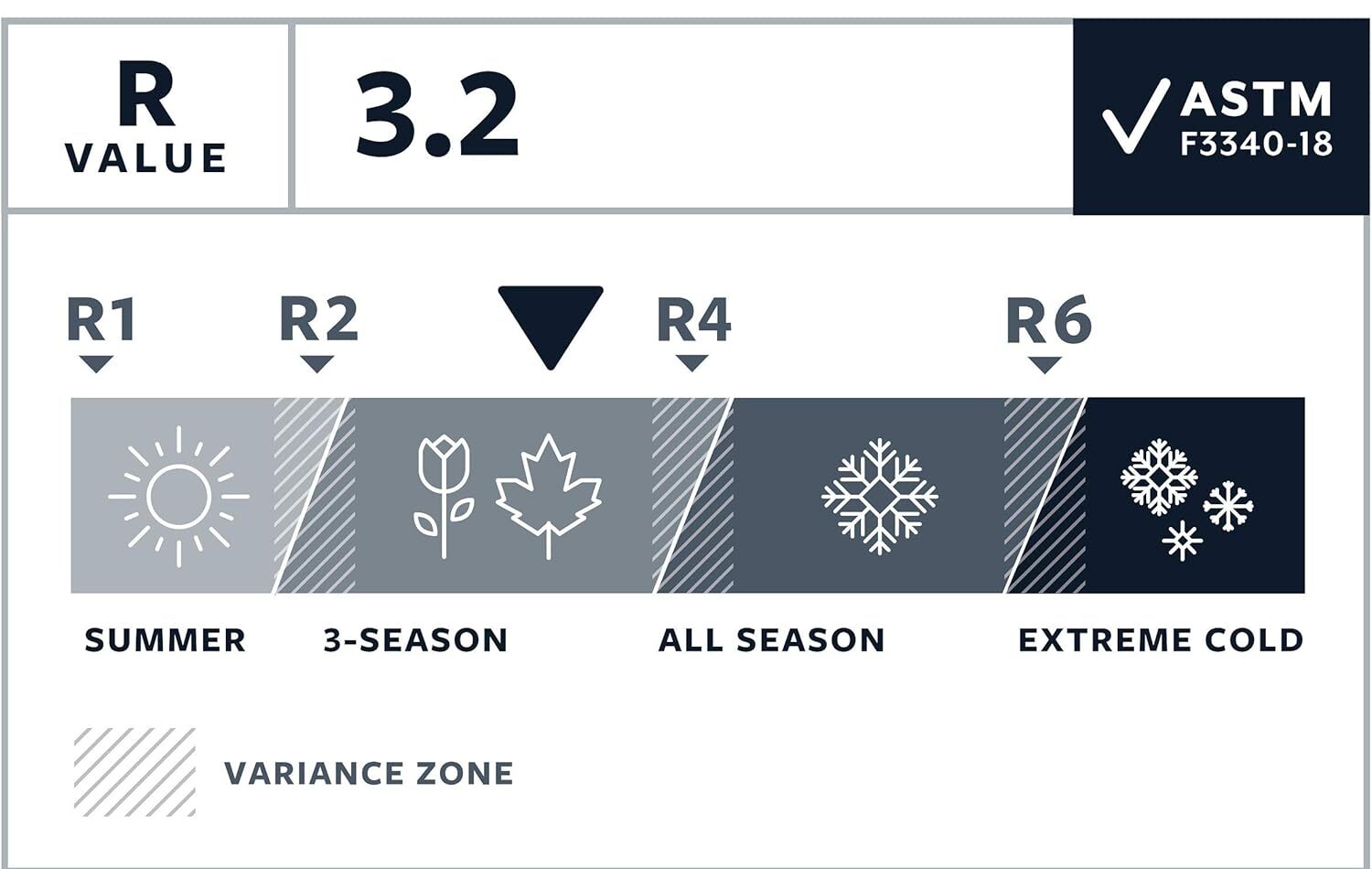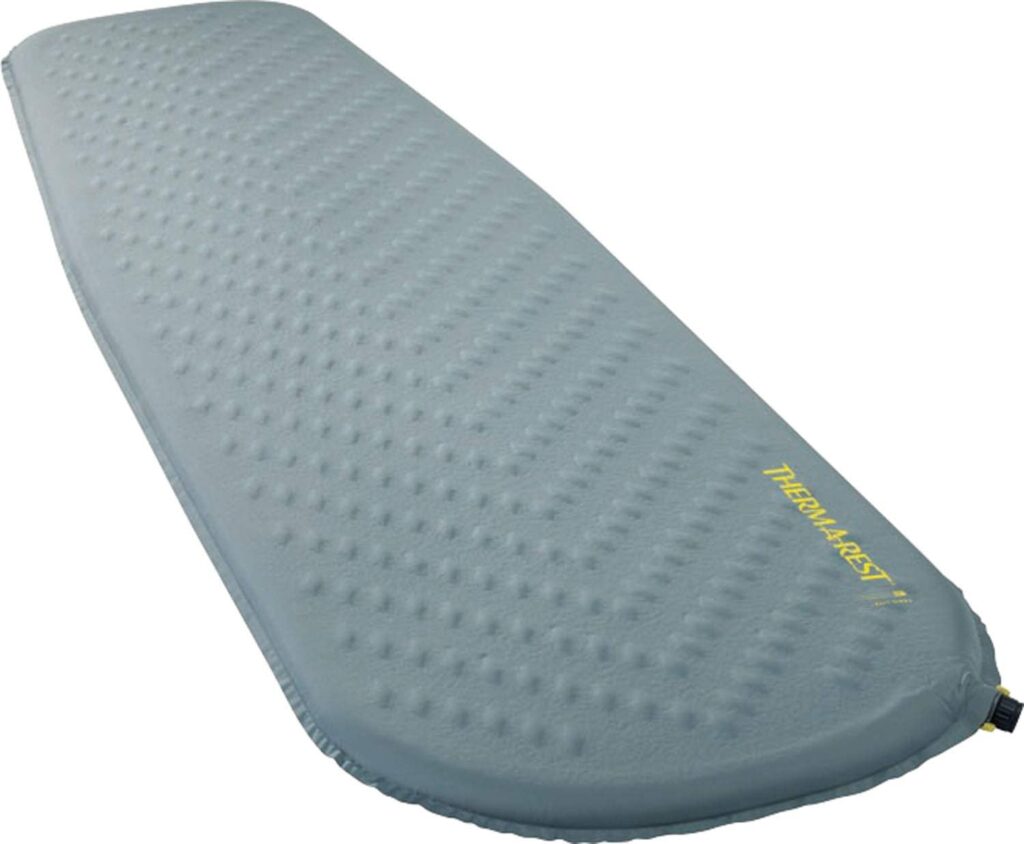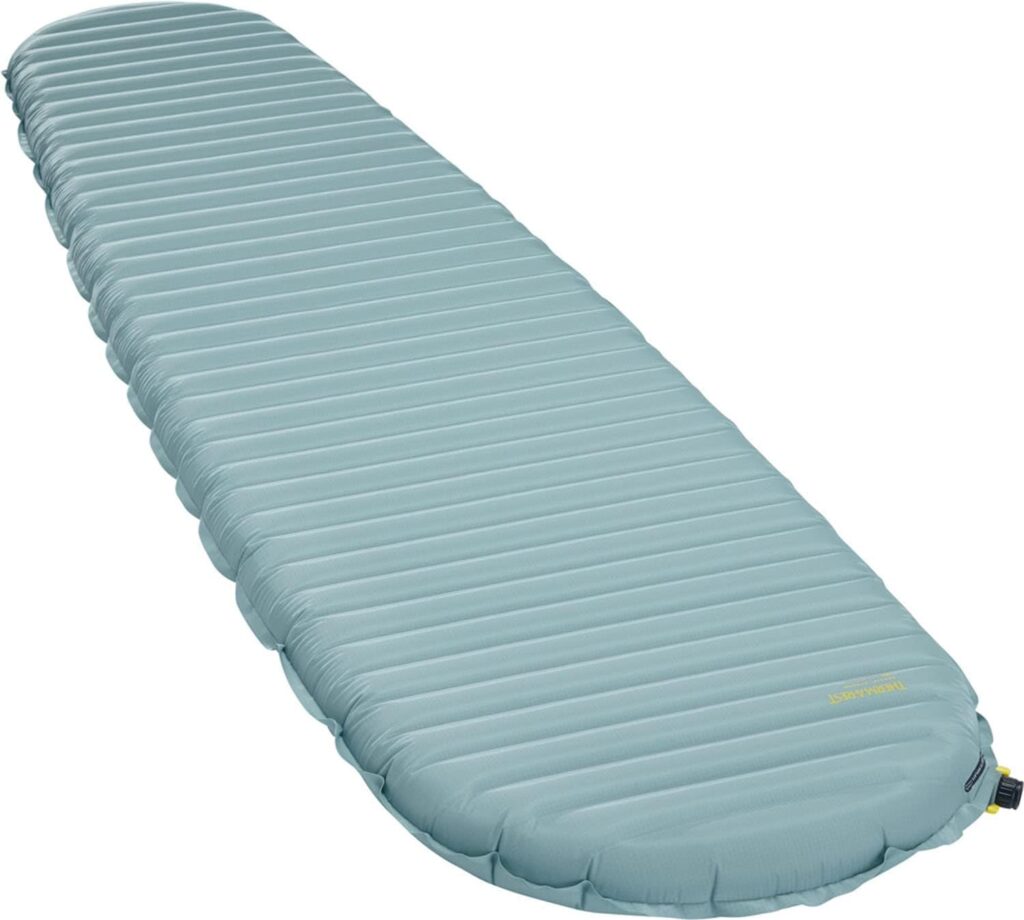<script type="text/javascript" src="http://classic.avantlink.com/affiliate_app_confirm.php?mode=js&authResponse=c4e13e1b9b5acdedad16d533a16f7bf0c234d607"></script>
<script type="text/javascript" src="http://classic.avantlink.com/affiliate_app_confirm.php?mode=js&authResponse=c4e13e1b9b5acdedad16d533a16f7bf0c234d607"></script>

When camping in colder temperatures, a sleeping pad’s R-value is just as important as your sleeping bag. Even the warmest sleeping bag won’t perform well if your sleeping pad lacks proper insulation from the cold ground.
In this guide, we’ll explain what R-value is, how it affects sleeping pad warmth, and why it matters for your outdoor adventures. If you’re looking for the best sleeping pads with high R-values, check out our Best Sleeping Pads of 2025 for expert recommendations.
The R-value (Resistance Value) measures a material’s ability to resist heat flow. In sleeping pads, a higher R-value means better insulation, which keeps you warmer by preventing body heat from escaping into the cold ground.
🔹 Best for cold weather: A high R-value (4.0+) sleeping pad ensures warmth in freezing conditions.
🔹 Best for year-round use: A sleeping pad with an R-value of 3.0+ offers versatility for multiple seasons.
👉 Pairs well with: Best Sleeping Bags for Winter Camping for ultimate cold-weather protection.
| R-Value | Best For | Temperature Rating |
|---|---|---|
| 1.0 – 2.0 | Summer camping | 50°F+ (Mild weather) |
| 2.1 – 3.9 | 3-season camping | 30°F – 50°F |
| 4.0 – 5.4 | Cold-weather camping | 10°F – 30°F |
| 5.5+ | Extreme winter camping | Below 10°F |
🔹 Best for versatility: Pads with R-values between 3.0 and 4.0 work well in most conditions.




🔹 Best for year-round adventurers: A sleeping pad with R-4+ provides cold-weather versatility.
👉 Pairs well with: Best 4-Season Tents for maximum warmth in extreme weather.
🔹 Best for insulation boost: Stacking a foam pad under an inflatable pad increases warmth.
What is a good R-value for a sleeping pad?
Does a higher R-value make a sleeping pad more comfortable?
Can I stack two sleeping pads for extra warmth?
Do sleeping pads lose insulation over time?
Can I use a summer sleeping pad in winter?
Understanding how R-value affects sleeping pad warmth helps you choose the right gear for your camping conditions.
Looking for the best sleeping pads for any adventure? Check out our Best Sleeping Pads of 2025 for expert recommendations!